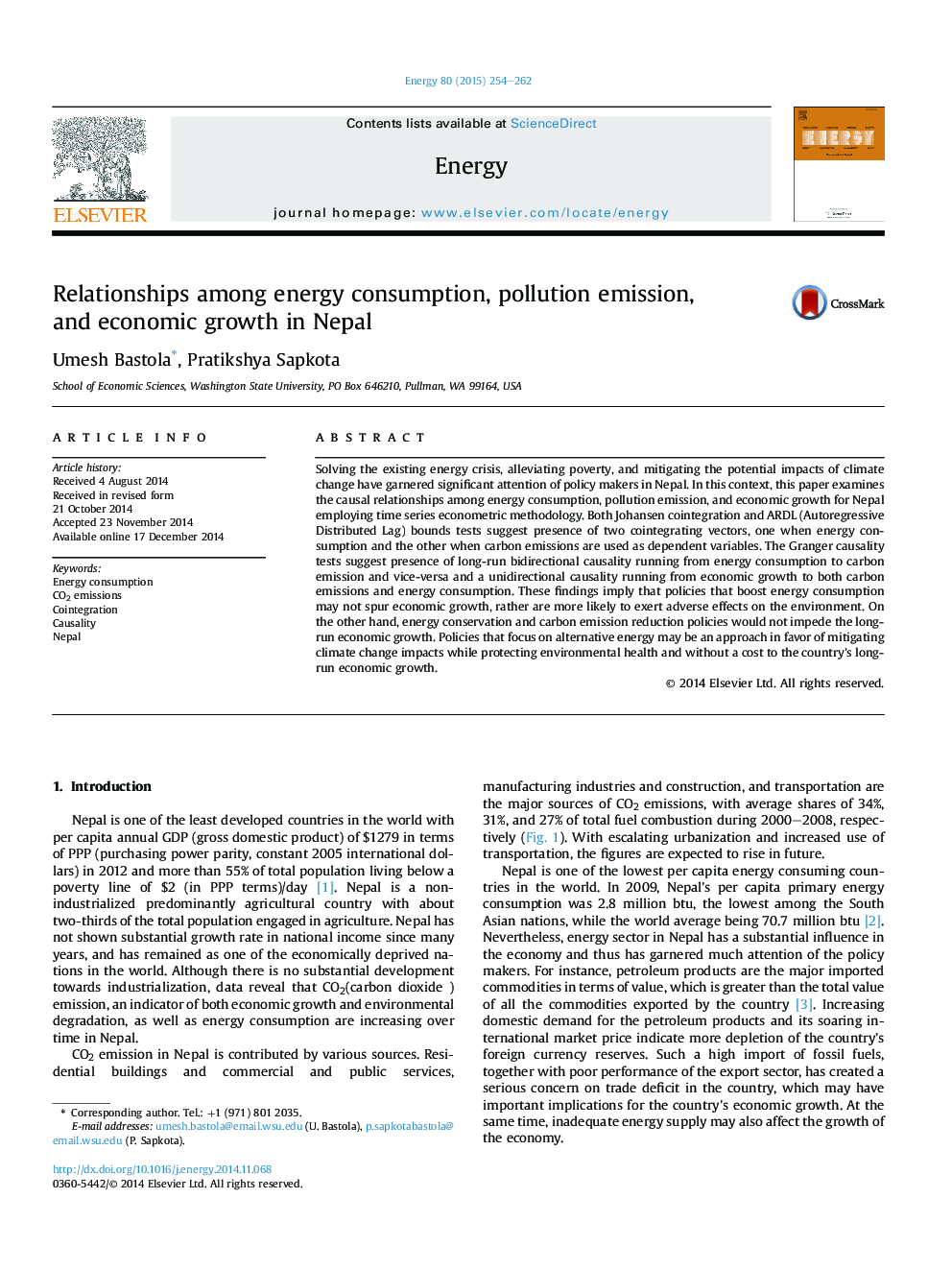| Article ID | Journal | Published Year | Pages | File Type |
|---|---|---|---|---|
| 1732005 | Energy | 2015 | 9 Pages |
•We examine causal relationships among energy, income, and pollution in Nepal.•Both Johansen test and ARDL bounds test suggest presence of two cointegrating vectors.•A feedback causal relationship exists between carbon emissions and energy consumption in the long run.•There is a unidirectional long-run causality running from economic growth to both pollution emissions and energy consumption.•Energy conservation and carbon emission reduction policies may not deter economic growth.
Solving the existing energy crisis, alleviating poverty, and mitigating the potential impacts of climate change have garnered significant attention of policy makers in Nepal. In this context, this paper examines the causal relationships among energy consumption, pollution emission, and economic growth for Nepal employing time series econometric methodology. Both Johansen cointegration and ARDL (Autoregressive Distributed Lag) bounds tests suggest presence of two cointegrating vectors, one when energy consumption and the other when carbon emissions are used as dependent variables. The Granger causality tests suggest presence of long-run bidirectional causality running from energy consumption to carbon emission and vice-versa and a unidirectional causality running from economic growth to both carbon emissions and energy consumption. These findings imply that policies that boost energy consumption may not spur economic growth, rather are more likely to exert adverse effects on the environment. On the other hand, energy conservation and carbon emission reduction policies would not impede the long-run economic growth. Policies that focus on alternative energy may be an approach in favor of mitigating climate change impacts while protecting environmental health and without a cost to the country's long-run economic growth.
